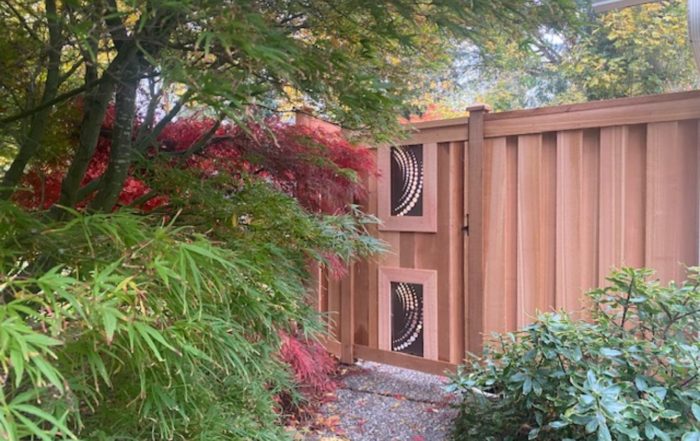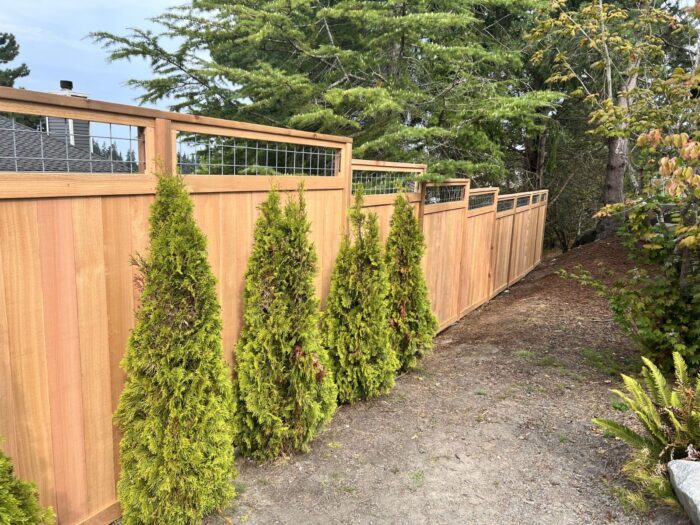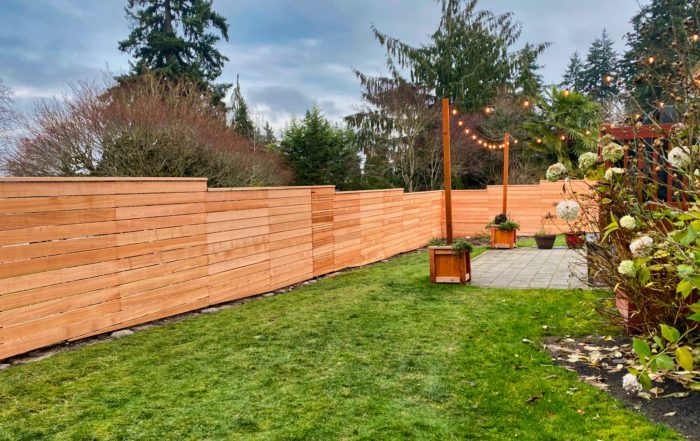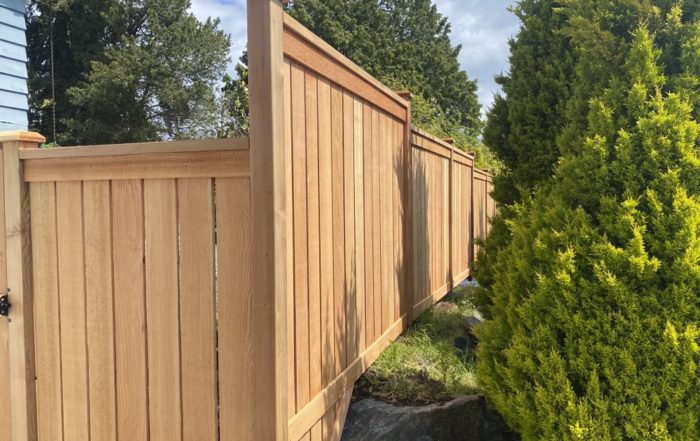Pets are not just animals; they are cherished members of our families. As of 2023, pet ownership in the United States has significantly expanded, with 5 million homes owning at least one pet. The households with dogs and cats tally up to an estimated 69 million and 45.3 million respectively...
Pets are not just animals; they are cherished members of our families. As of 2023, pet ownership in the United States has significantly expanded, with 5 million homes owning at least one pet. The households with dogs and cats tally up to an estimated 69 million and 45.3 million respectively. The global pandemic from March 2020 to May 2021 triggered a spike in pet adoption, resulting in approximately 23 million households welcoming a new pet.
One thing is clear, we love out pets. And, as responsible pet owners, it is our duty to provide them with a safe and secure environment, especially when it comes to the boundaries of our homes. This is where a pet-friendly fence becomes crucial.
A well-designed and properly installed fence not only provides containment but also ensures the safety and well-being of our furry companions. In this comprehensive installation guide, we will explore the various aspects that contribute to creating a fence that meets the specific needs of your pets.
Importance of a Pet-Friendly Fence
A pet-friendly fence goes beyond mere physical boundaries; it offers numerous benefits for both pets and their owners. Firstly, it provides an enclosed space for your pets to roam freely, giving them ample room to exercise and play without fear of escaping or encountering potential dangers outside.
This allows for a healthy and active lifestyle, reducing boredom-related behaviors such as excessive barking or destructive chewing. Secondly, a pet-friendly fence acts as a barrier against external threats, ensuring the safety of your beloved companions.
It prevents them from wandering off into busy streets where accidents can occur or getting lost in unfamiliar surroundings. Additionally, it safeguards them from encounters with aggressive animals or potential predators that may lurk nearby.
Furthermore, a well-constructed fence can help establish boundaries and prevent conflicts between your pets and neighbors or passersby. It creates peace of mind by controlling their access to shared spaces like neighboring gardens or communal areas while protecting strangers from any unwarranted interactions with your pets.
Overview of the Installation Guide
This installation guide aims to equip you with essential knowledge on ensuring every aspect of your fence is pet-friendly. We will delve into selecting appropriate materials suitable for different pets’ needs while considering maintenance requirements.
We will discuss how choosing the right height and design elements prevent escape attempts and address the specific needs of different types of pets, including dogs and cats. Additionally, we will cover important gate systems that enhance pet safety and explore the importance of avoiding toxic materials in your fencing components.
By following this step-by-step guide, you will gain the necessary insights to create a secure, pet-friendly fence that not only meets your pets’ needs but also aligns with your aesthetic preferences. So let us embark on this journey together as we unveil the secrets to constructing a fence that provides both practicality and peace of mind for you and your furry companions.
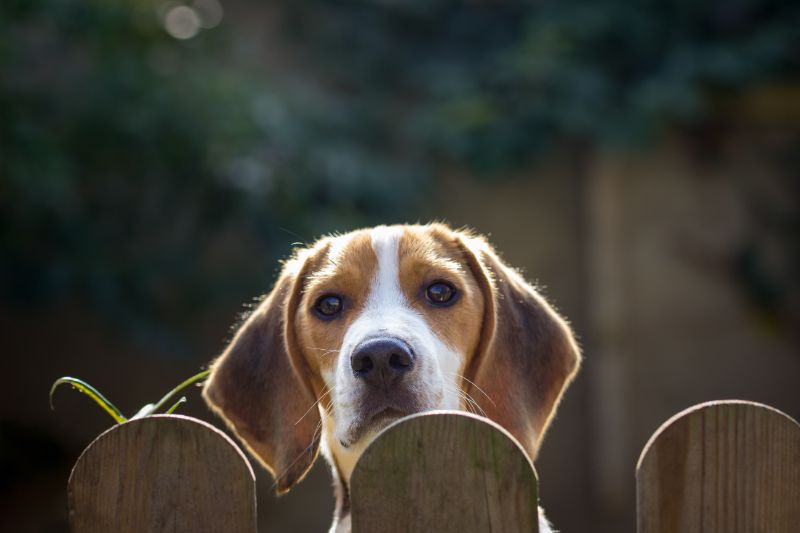
Choosing the Right Fence Material
Wood Fences: A Classic Choice
Wood fences, especially Cedar, have long been a popular choice for homeowners seeking a blend of aesthetic appeal and functionality. One of the key benefits of wood fences is their natural beauty, which adds warmth and charm to any property.
Additionally, wood fences offer remarkable versatility in terms of design options, enabling you to customize the look and feel to suit your specific tastes and requirements. However, it is essential to consider both the benefits and drawbacks associated with wood fences when it comes to pet-friendliness.
On the positive side, wood is generally a sturdy material that can withstand moderate wear and tear caused by pets. It provides an effective visual barrier while allowing sufficient airflow.
Yet, there are some drawbacks worth considering as well. Wood fences are susceptible to rotting over time, particularly when exposed to excessive moisture or if not adequately maintained.
This factor can compromise its durability and may require periodic repairs or replacements. To ensure your wood fence is suitable for pets, it’s crucial to select the right type of wood.
Certain varieties are more resistant to decay and pests than others. Cedar and redwood are excellent choices due to their natural oils that act as preservatives, making them highly durable options for pet-friendly fencing.
Vinyl Fences: Durability with Minimal Maintenance
For pet owners seeking a low-maintenance option without compromising on durability or aesthetic appeal, vinyl fences present an excellent solution. Vinyl has gained popularity in recent years due to its impressive longevity and resistance against rotting, warping, or insect damage.
When considering pets specifically, vinyl fences offer several advantages worth noting. The smooth surface of vinyl makes it difficult for animals like cats or dogs to climb over it easily, aiding in containment efforts effectively.
Moreover, unlike wood fences that may splinter over time and pose risks of injury for pets, vinyl fences do not present such hazards. Maintenance requirements are another significant advantage of vinyl fences.
Unlike wood, which requires regular staining or painting to maintain its appearance and prolong its lifespan, vinyl only demands occasional cleaning with mild soap and water to remove dirt or stains. This quality makes it a convenient choice for busy pet owners who would rather spend their time enjoying their furry companions than maintaining their fence.
However, it is important to note that extreme weather conditions, such as prolonged exposure to high heat or freezing temperatures, can potentially impact the integrity of vinyl fences. Therefore, it is advisable to consult with a professional installer to ensure proper installation techniques are followed.
Both wood and vinyl fences have their pros and cons when it comes to pet-friendliness. Wood offers a classic look with customizable design options but may require more maintenance over time.
On the other hand, vinyl provides excellent durability and minimal upkeep requirements while maintaining an attractive appearance. By considering your specific needs along with the benefits and drawbacks of each material type, you can make an informed decision that best suits your pet’s safety and your long-term satisfaction.
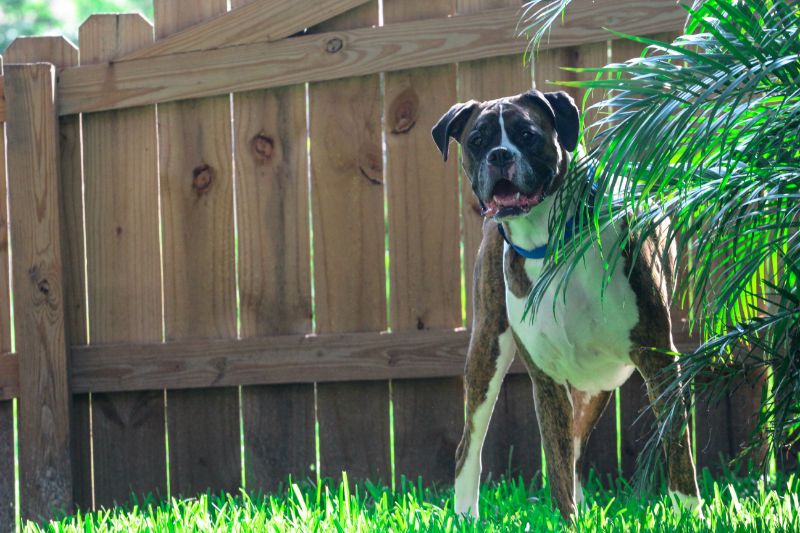
Fence Height and Design Considerations
Ideal height to prevent escape attempts by different pets
Choosing the right fence height is crucial when it comes to keeping your furry friends safe and secure within your property. Dogs, in particular, have varying abilities when it comes to jumping and climbing, depending on their breed and size. For small dog breeds like Chihuahuas or Shih Tzus, a fence with a height of around 3-4 feet may be sufficient to discourage escape attempts.
Medium-sized dogs such as Beagles or Cocker Spaniels generally require a fence that is at least 4-5 feet tall. On the other hand, larger breeds like German Shepherds or Golden Retrievers necessitate fences in the range of 6-8 feet in order to prevent any successful leaps over them.
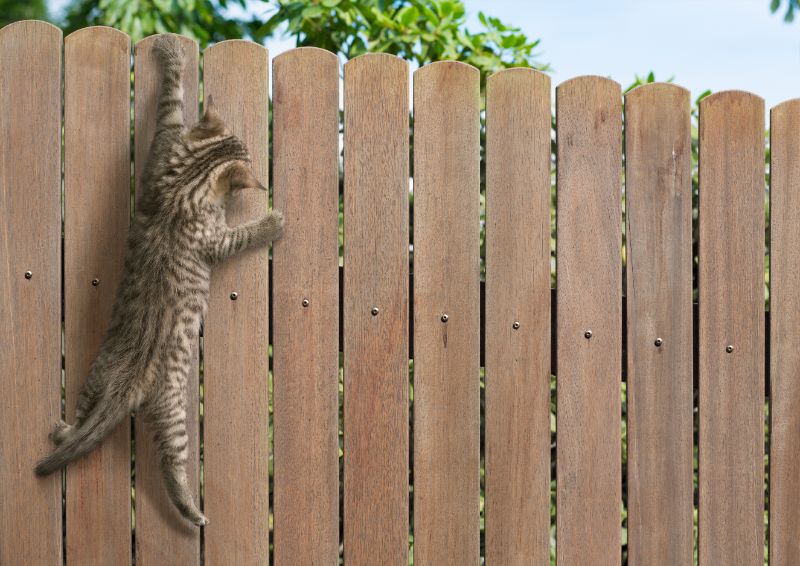
Cats: jumpers and climbers
Cats possess exceptional jumping and climbing skills, making it essential to consider their unique abilities when designing a pet-friendly fence. Felines have been known to effortlessly scale heights that seem insurmountable, so providing them with an enclosed space is vital for their safety. A cat-friendly fence should ideally be tall and have an overhang or cat-proof barriers on top, preventing them from jumping out or escaping via nearby structures like trees.
Combining these fences with other deterrents, such as safe cat repellents or motion-activated sprinklers, can also help keep your feline friend safely within your yard.
In all cases, the fence should be tall enough (at least six feet) to discourage cats from jumping over, and secure at the bottom to prevent them from squeezing under.
Vertical picket spacing to deter small animals from squeezing through
When it comes to securing your property against smaller creatures like rabbits, squirrels, or even curious puppies, vertical picket spacing plays a significant role. It’s important to ensure that the gaps between each picket are narrow enough so that these critters cannot squeeze through or get stuck attempting to do so. On average, pickets spaced no more than 2-3 inches apart provide sufficient protection against such intrusions.
Smooth surfaces to prevent injuries or snagging
Smooth surfaces are essential to avoid injuries and prevent your pets from getting tangled or snagged while moving around the fence. Eliminating rough edges, sharp corners, or protruding nails is crucial for their safety.
Opting for materials like vinyl or composite that offer seamless finishes can greatly reduce the risk of any unfortunate accidents. Regularly inspecting your fence for any signs of damage or wear and promptly repairing any potential hazards can further ensure a safe environment for your beloved pets.
By carefully considering these fence height and design considerations, you can create a pet-friendly environment that safeguards both the security of your furry companions and your peace of mind knowing they are protected within the boundaries of your property. Remember to tailor these aspects according to the specific needs of your pets, always prioritizing their comfort and safety above all else.
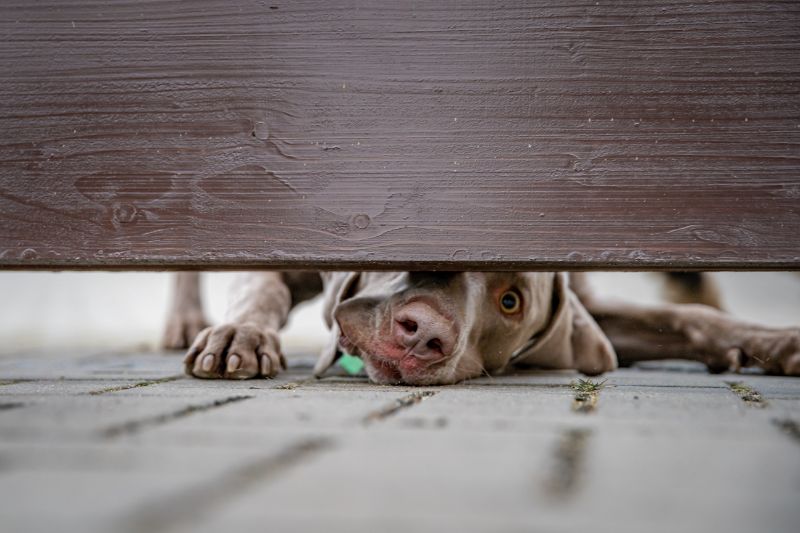
Securing the bottom of your fence to prevent pet escapes
Equally important to the height and design of your fence is ensuring that the base is secure. Dogs and cats, being the crafty creatures they are, may attempt to escape not only over the fence, but under it as well. Therefore, securing the bottom of your fence is an essential aspect of pet-proofing your yard.
- Install a Digging Barrier: This can be in the form of a wire mesh, chicken wire, or specialized products designed to prevent digging. These barriers extend a few feet into the ground to deter your pet from excavating their way out.
- Use Concrete or Rocks: Laying a concrete footer or large rocks along the base of the fence can dissuade your pet from trying to dig. This solution can also be decorative, adding to the aesthetic of your landscaping.
- Concrete base: A concrete base or footer can act as a physical barrier that makes it almost impossible for pets to dig underneath the fence. If the concrete extends slightly above the ground, it can discourage animals from even attempting to dig. This method is particularly effective for larger pets or breeds known for their digging abilities, like terriers.
- Metal base: For chain-link or metal fences, a metal base or a bottom tension wire can help prevent pets from escaping. This wire can be attached to the bottom of the fence, creating a barrier that pets cannot easily push under or dig beneath.
- Regular Inspection and Maintenance: Regularly check your fence for any gaps or signs of digging and repair them immediately. Regular maintenance can prevent your pet from getting a head start on their escape plans.
- Train Your Pet: Lastly, training your pet to refrain from digging or attempting to escape can be very effective. Consider using positive reinforcement techniques.
Securing the base of your fence is just as important as its height or material when it comes to keeping your pets safe and secure within your yard. With these strategies, you can have peace of mind knowing your furry friends are not only safe from harm, but also from potential escape attempts.
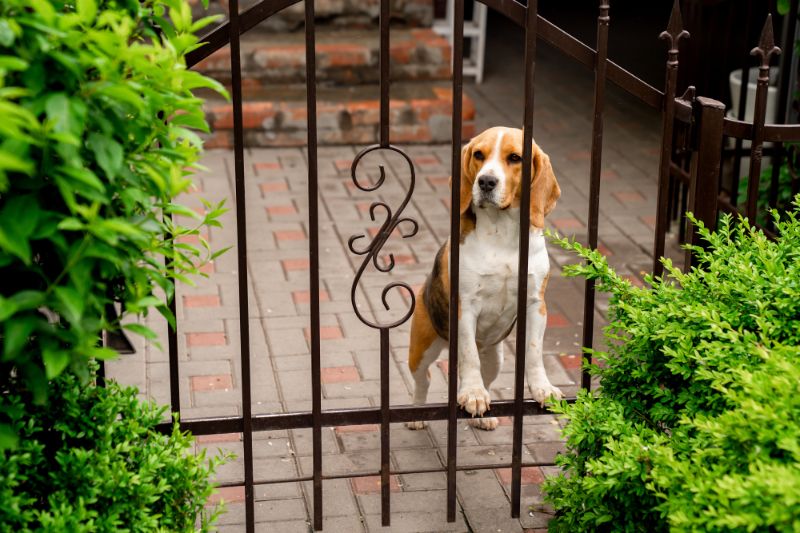
Secure Gate Systems for Pet Safety
Self-Closing Gates with Latches at Appropriate Heights
Gates form an essential part of any pet-friendly fence, ensuring both security and convenience. When selecting a gate for your pets, it is crucial to choose a self-closing gate that automatically shuts behind you and your furry friend. This feature eliminates the risk of accidentally leaving the gate open, which could lead to potential escape or injury.
Self-closing gates are typically equipped with tension hinges that control the speed at which the gate closes gently yet securely. Furthermore, consider installing latches at an appropriate height that your pet cannot easily manipulate.
For example, if you have dogs in various sizes or breeds, position the latch high enough so that larger dogs cannot reach it while allowing smaller ones to access it comfortably. This ensures that your pets remain safely contained within your property while granting you easy access in and out.
Consideration for Double Gates or Airlock Systems to Prevent Accidental Escapes
To provide an additional layer of protection against accidental escapes, consider incorporating double gates or airlock systems into your fence design. Double gates consist of two separate gates installed side by side with a small space between them.
This setup allows you to enter through one gate while ensuring there is always a barrier preventing your pet from escaping through an open gate. Alternatively, airlock systems can be utilized when space is limited or as an alternative to double gates.
Airlocks consist of an enclosed area between two gates where you can safely secure your pet before opening the second gate leading outside. These systems effectively prevent any possibility of accidental escape by providing two barriers before allowing access to the outside world.
Electronic Pet Doors Integrated into the Gate System
Innovations in pet-friendly fencing have led to electronic pet doors being integrated directly into the gate system itself. These doors are controlled by either a collar tag worn by your pet or a sensor that detects their presence. With an electronic pet door, your furry companion can have the freedom to move in and out of the fenced area without any risk of unauthorized animals entering your property.
These doors can be programmed to allow access only for specific pets, ensuring that no stray animals or potential threats wander onto your property. Additionally, electronic pet doors provide a convenient option for allowing your pets to go outside at their leisure without requiring you to constantly open and close gates.
This feature is particularly useful if you have a busy schedule or if you want to grant your pets some independence while maintaining their safety within the confines of the fenced area. By implementing these secure gate systems, including self-closing gates with latches at appropriate heights, considering double gates or airlock systems, and integrating electronic pet doors into the gate system itself, you can ensure optimal safety for your beloved pets while still maintaining easy access and convenience for yourself.
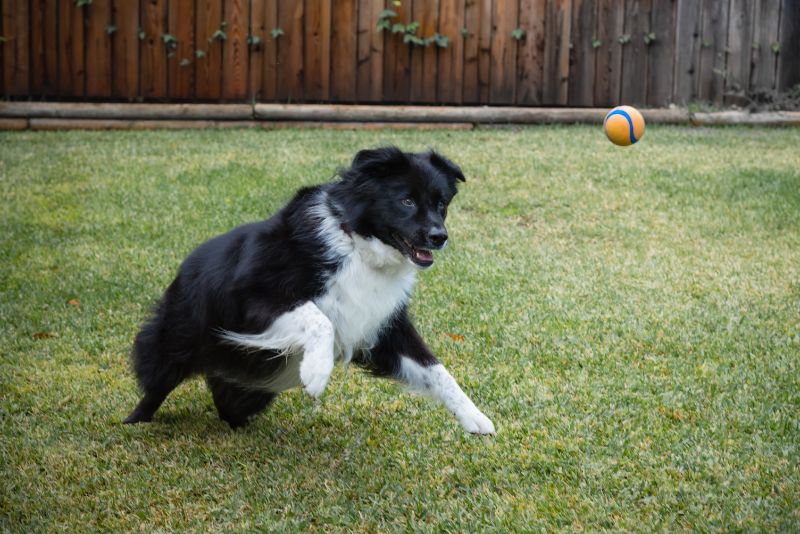
Avoiding Toxic Materials in Fencing Components
Harmful chemicals in wood treatments or stains
Wood fences are a popular choice for pet owners due to their natural appearance and durability. However, it is essential to be mindful of the chemicals used in wood treatments and stains, as some can be harmful to pets. Many conventional wood treatments contain toxic substances such as arsenic, creosote, or volatile organic compounds (VOCs), which can pose health risks if pets come into contact with them. These chemicals may cause skin irritations, respiratory problems, or even poisoning if ingested by curious pets.
Non-toxic alternatives for preserving wood fences
To ensure the safety of your pets, opt for non-toxic alternatives when preserving your wood fence. Look for water-based or plant-based wood sealants and stains that are free from harmful chemicals. Natural oils like linseed oil or tung oil are excellent options as they provide protection without posing any health risks to your furry friends. Additionally, consider using paints or finishes labeled as pet-safe and eco-friendly.
Safe coatings for metal fences
Metal fences offer durability and longevity but require proper coatings to prevent rusting and corrosion over time. When selecting coatings for metal fences, it’s crucial to choose those that do not contain toxic substances that could harm your pets if they lick or chew on the fence. Look for powder-coated finishes that conform to safety regulations and do not contain lead or other hazardous materials.
Tips for Dog Owners From The Experts
Keeping an eye on our dogs when they’re playing in a fenced yard is super important. It’s not just about stopping them from causing a racket, barking their heads off at every squirrel that dares to cross their path. It’s also about safety, like preventing fence fights with other dogs, or stopping them from gobbling up random objects that could harm them. Trust me, a few moments of inattention could mean a surprise trip to the vet’s office [1].
Don’t forget that dogs, especially when they’re bored, can turn into Houdini! If they’re left unsupervised for too long, they might start thinking about an escape plan. But don’t sweat it, tech can be our best friend here. GPS-enabled collars are like a secret agent gadget for keeping tabs on our adventurous pups. And a little bit of extra work on the fence can do wonders to stop their escape plans in their tracks [2].
Now, having a fenced yard for your dog is awesome, but it’s not a “one-and-done” kind of deal. Dogs need more than just a yard to roam in – they need regular walks and puzzles to solve, things that challenge them both physically and mentally. If your dog ends up bored, they might just start redecorating your home with their teeth!
And hey, while dog parks may seem like a great idea to help your dog burn off some energy and meet new friends, they aren’t a fit for every pooch. They can sometimes be overwhelming for puppies or dogs that aren’t used to a crowd.
So, in a nutshell, while a fenced yard can be a real life-saver for keeping your dog safe, it’s not the whole story. You’ve got to keep an eye on them, provide regular exercise, and keep their minds sharp. All this adds up to a happy and healthy doggie lifestyle. Keep up the good work!
Key Takeaways
When it comes to ensuring a pet-friendly fence installation, being aware of the potential hazards associated with fencing components is crucial. By avoiding toxic materials in wood treatments and stains, opting for non-toxic alternatives, and selecting safe coatings for metal fences, you can create a pet-friendly environment that prioritizes the well-being of your furry companions. Remember, pets are part of our families, and their safety should be a top priority in every aspect of our lives.
By taking these precautions during the fence installation process, you not only protect your pets but also contribute to a healthier and safer environment for everyone. Enjoy the peace of mind that comes with providing your pet with a secure and non-toxic outdoor space to roam freely.
FAQ
- What is a pet-friendly fence? A pet-friendly fence is a well-designed and properly installed barrier that ensures the safety and well-being of our pets, providing them an enclosed space to exercise and play freely without escaping or encountering potential dangers.
- Why is a pet-friendly fence important? A pet-friendly fence offers numerous benefits. It provides an enclosed space for your pets to exercise, reduces boredom-related behaviors, acts as a barrier against external threats, and prevents conflicts between your pets and neighbors or passersby.
- What materials are suitable for a pet-friendly fence? Various materials can be used for pet-friendly fences such as wood, metal, and chain link. The choice of material depends on your pet’s needs and your aesthetic preferences.
- Why are wood fences a good choice for pet-friendly fences? Wood fences, especially Cedar, offer a blend of aesthetic appeal and functionality. They are sturdy and provide an effective visual barrier. They also offer remarkable versatility in terms of design options specific to your pet.
- How should I consider the height and design elements of a pet-friendly fence? The right height and design elements of a pet-friendly fence should be considered based on your pet’s size and ability to jump or climb. The fence should be high enough to prevent escape attempts and designed to cater to the specific needs of different types of pets, including dogs and cats.
- What is the role of gate systems in a pet-friendly fence? Gate systems are essential components of a pet-friendly fence. They enhance pet safety by preventing escape attempts and controlling the access points of your pets to the outside world.
- Why should I avoid toxic materials in my pet-friendly fence? Toxic materials can be harmful to your pets if ingested or touched. They might lead to health issues, so it’s crucial to use non-toxic materials in your fencing components to ensure your pet’s safety.
- What should be my considerations for maintenance requirements in choosing fence material? Maintenance requirements depend on the material of the fence. Some materials might require more upkeep than others. Considering the maintenance requirement while selecting the material helps to keep the fence durable and secure for a long time.
Sky Fence Company: Your Trusted Fencing Experts
As the leading provider of exceptional fence installations and repairs, Sky Fence Company is dedicated to delivering superior craftsmanship and personalized service. With our team of skilled professionals and commitment to quality, we are the go-to choice for all your fencing needs. Trust Sky Fence Company to enhance your property with durable and visually appealing fences that exceed expectations.

